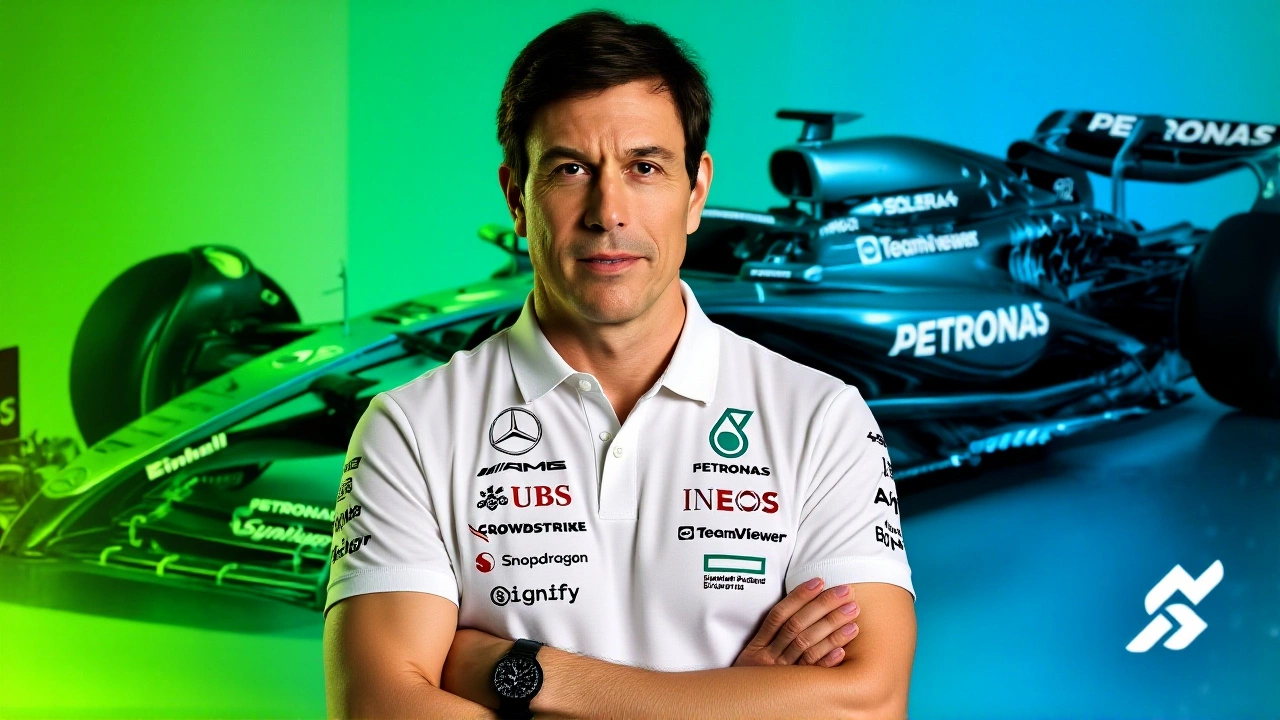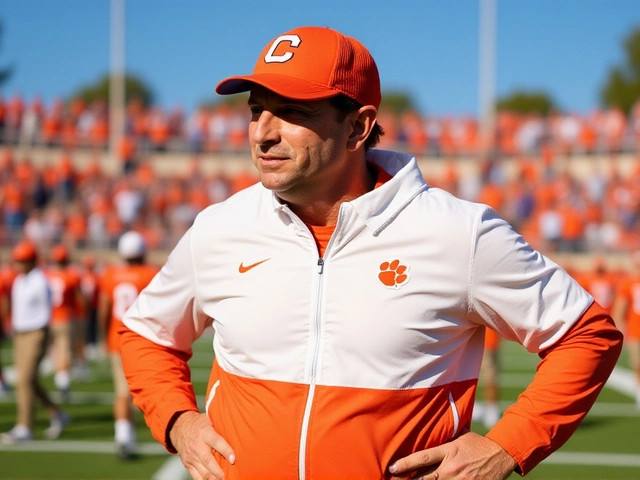
When Toto Wolff walked off the podium at the Las Vegas Grand Prix on November 22, 2025, he wasn’t just celebrating his team’s strong finish—he was also quietly cementing one of the most unusual ownership shifts in Formula 1 history. Just two days earlier, the 53-year-old Austrian team principal sold a 15% stake in his personal holding company, Motorsport Invest Limited, to George Kurtz, the 55-year-old American tech billionaire and founder of CrowdStrike. The $300 million deal values the Mercedes-AMG Petronas Formula One Team at a record-breaking $6 billion. And yet, Wolff insists nothing has changed—except everything has.
Why a Cybersecurity CEO Is Buying Into F1
Kurtz isn’t your typical F1 investor. He didn’t make his fortune in oil, luxury goods, or private equity. He built CrowdStrike into a global cybersecurity giant by turning threat detection into a real-time data game. And he’s also a serious racer: 2023 SRO GT World Challenge champion, class winner at Le Mans, and a regular in the Mercedes-AMG Customer Racing program. That duality—tech entrepreneur and motorsport enthusiast—is exactly what Wolff wanted. "George’s background is unusual in its breadth," Wolff told ABC News. "He’s a racer, a loyal sporting ambassador for Mercedes-AMG, and an exceptional entrepreneur. He understands both the demands of racing and the realities of building and scaling technology businesses." Kurtz echoed the sentiment: "Winning in racing and cybersecurity requires speed, precision, and innovation. Milliseconds matter. Execution counts. Data wins." This isn’t a corporate acquisition. CrowdStrike has been a global partner since 2019, but this was a personal investment. Kurtz bought into Wolff’s holding company, not the team directly. That’s critical. It sidestepped the existing shareholder agreement that blocks outright sales among the three owners—Wolff, Mercedes-Benz, and INEOS. Instead, Kurtz now holds a 5% indirect stake in the team through MIL’s 33% holding.The $6 Billion Team: How Did We Get Here?
In 2008, Mercedes-AMG Petronas Formula One Team was bought for £1 from Honda. Fast-forward to 2025: $6 billion. What changed? The cost cap. Wolff credits the 2021 financial regulations for turning F1 teams into profitable enterprises. "We were able to increase the revenues and increase the free cash flows," he said. "And that put on the multiples that the industry has led us to these valuations." He compares it to the Dallas Cowboys, whose value jumped from $3 billion to $12 billion in five years under similar financial discipline. The F1 model, once a money pit, is now a high-margin, high-revenue business. Sponsorships, media rights, and merchandising—all now predictable under the cost cap—have made teams attractive to investors who understand scalable growth.Who Owns What? The New Ownership Map
The structure remains unchanged on paper: three equal partners. Mercedes-Benz, represented by chairman Ola Kallenius, holds 33%. INEOS, led by Sir Jim Ratcliffe, holds another 33%. Wolff’s MIL holds the remaining 33%. Now, Kurtz owns 15% of MIL—meaning his effective stake is 5%. But here’s the twist: Kurtz joins the strategic steering committee. That’s new. He’s not just a silent investor. He’s now part of the inner circle that guides the team’s long-term direction—alongside Wolff, Kallenius, and Ratcliffe. "It’s not about control," Wolff clarified to Motorsport.com. "It’s about leverage. George brings the U.S. market. He brings tech credibility. He brings a racing soul."
What This Means for the Team—and F1
Mercedes is currently second in the 2025 Teams’ Championship, behind McLaren, with three races left. George Russell and Andrea Kimi Antonelli finished P3 and P5 at the Las Vegas Grand Prix, proving the car still has legs. But beyond the track, this deal signals a new era. F1 is no longer just for wealthy families or carmakers. It’s attracting tech founders who see motorsport as a real-world lab for innovation. Kurtz’s involvement could accelerate data-driven performance, cybersecurity integration in team systems, and digital fan engagement—all areas where CrowdStrike excels. And it’s not just Mercedes. Other teams are already being courted by private equity and tech investors. This deal sets a benchmark. If a $6 billion valuation is possible for a team that hasn’t won a constructor’s title since 2021, what’s next?Wolff’s Future: No Exit Plans
Despite the massive payout—estimated at £230 million—Wolff made it clear he’s not walking away. "I have no plan to sell the team or leave my role," he said after the race. "I’m in a good space. I’m enjoying it. As long as I feel I’m contributing, there’s no reason to think in that direction." He’s not just being polite. At 53, Wolff still has the energy of a team leader who thrives on pressure. He’s the emotional core of the operation. The team’s culture, its relentless focus on detail, its internal rivalry with Red Bull—all of it still runs through him. The sale wasn’t an exit. It was a strategic infusion.
Historical Context: From £1 to Billion
The transformation of this team is one of the most remarkable stories in modern motorsport. In 2008, Mercedes-AMG Petronas Formula One Team was a shell. Ross Brawn bought it from Honda for £1, then restructured it into a powerhouse. By 2014, with the hybrid era, they dominated. Eight straight constructors’ titles. Seven drivers’ championships. A legacy built on engineering genius and financial discipline. Now, with Kurtz’s arrival, it’s entering a new phase: one where tech innovation meets racing tradition.Frequently Asked Questions
How did George Kurtz become involved with Mercedes F1 before buying a stake?
Kurtz has been a long-time racing enthusiast and customer of Mercedes-AMG’s GT program since 2019, when CrowdStrike became a global team partner. He competed in the 2023 SRO GT World Challenge and the Asia Le Mans Series under the Mercedes banner, giving him firsthand experience with the team’s operations and culture. His racing success and tech background made him a natural fit for deeper involvement.
Why didn’t CrowdStrike buy the stake directly?
The deal was structured as a personal investment to avoid violating the shareholders’ agreement, which prohibits direct sales among the three main owners. By purchasing shares in Motorsport Invest Limited, Kurtz bypassed the restriction while still gaining influence. CrowdStrike remains a sponsor, not an owner, preserving its commercial role.
What impact does this have on Mercedes’ competitiveness in 2025?
There’s no immediate performance impact. The car’s design and engineering remain unchanged. But Kurtz’s presence on the steering committee could lead to long-term improvements in data security, real-time telemetry analysis, and digital fan engagement tools. His tech expertise may also help attract U.S.-based sponsors, potentially increasing revenue streams without violating cost cap rules.
Is this a sign that F1 teams are becoming more like tech startups?
Absolutely. The cost cap turned F1 teams into lean, cash-generating businesses. With $6 billion valuations now possible—even for teams not winning championships—investors are seeing them as scalable platforms, not just racing outfits. Kurtz’s involvement mirrors how Silicon Valley views sports: as a testing ground for innovation, branding, and global reach. This isn’t just about cars. It’s about data, speed, and systems.
What’s next for Toto Wolff after this sale?
Wolff remains fully in charge as team principal and CEO. He’s using the $300 million windfall to diversify his personal investments, but he has no intention of stepping down. In fact, he’s reportedly exploring new motorsport ventures, including potential involvement in electric racing series. His focus is still on keeping Mercedes competitive through 2026 and beyond.
How does this deal compare to other F1 team sales?
Previous F1 team sales, like the 2022 purchase of AlphaTauri by Red Bull, involved corporate transfers. This is the first time a tech founder has bought a personal stake in a top team through a holding company while remaining outside the core ownership group. The $6 billion valuation also surpasses the previous record set by Red Bull’s estimated $5.2 billion valuation in 2024, making Mercedes the most valuable team in F1 history.


